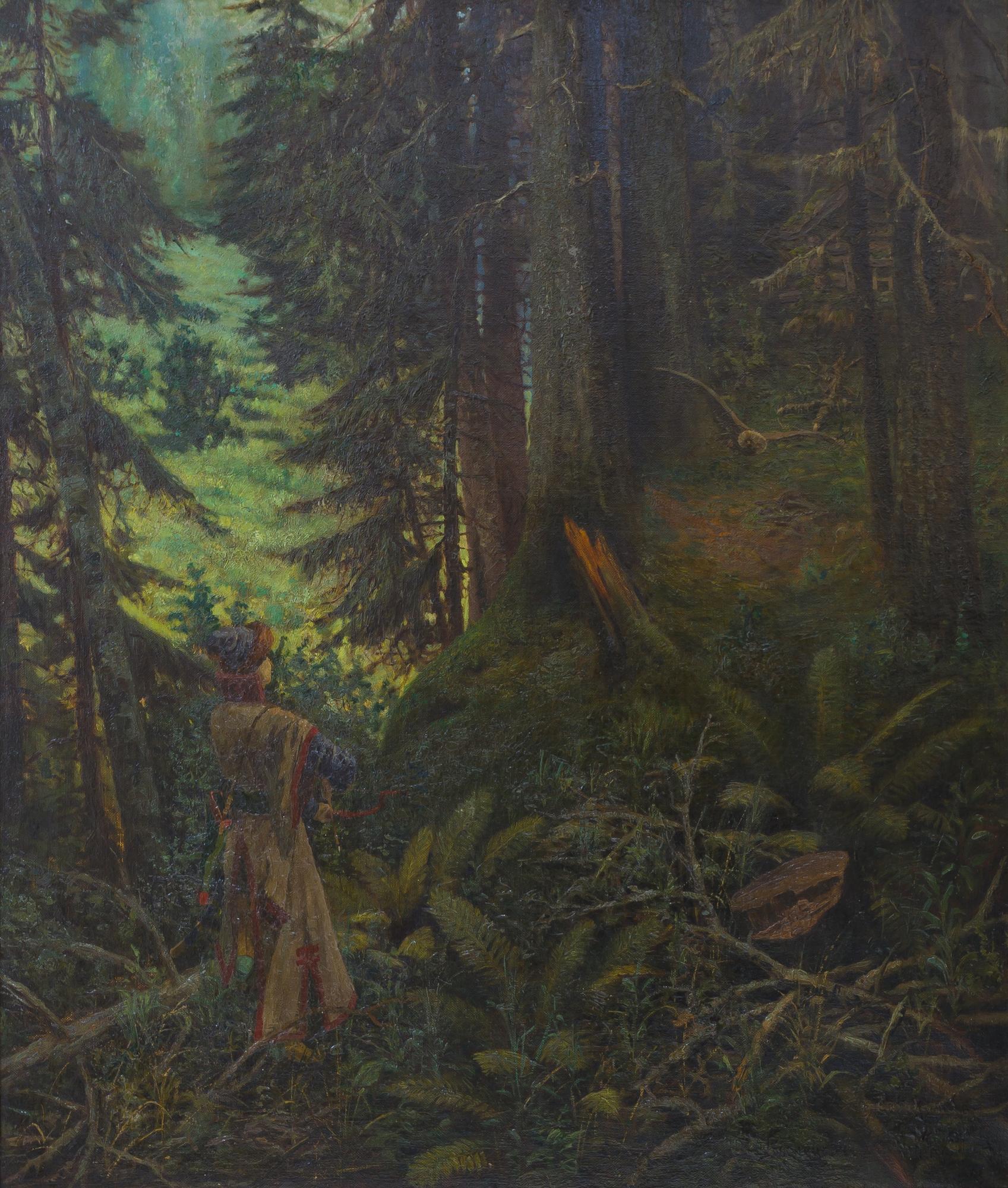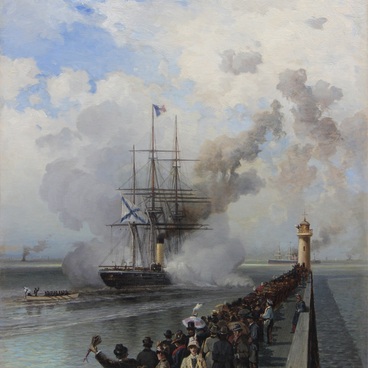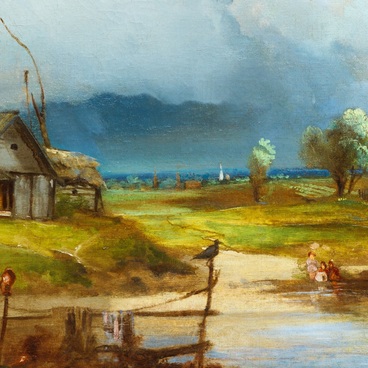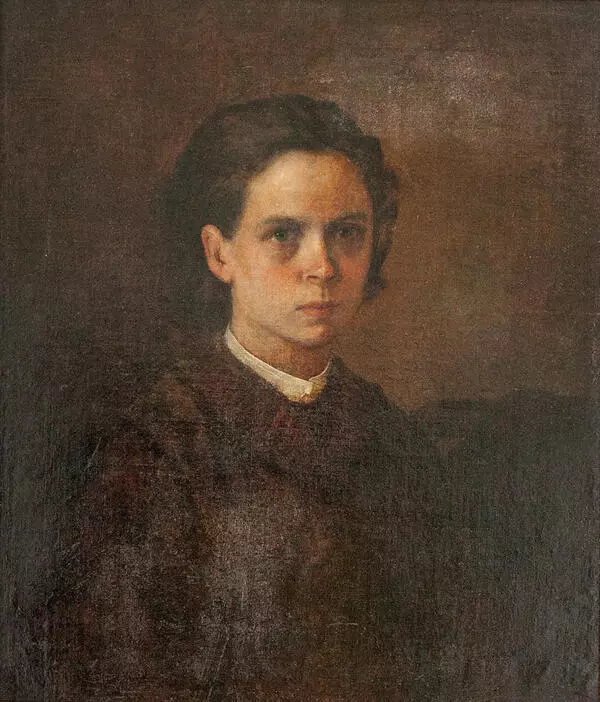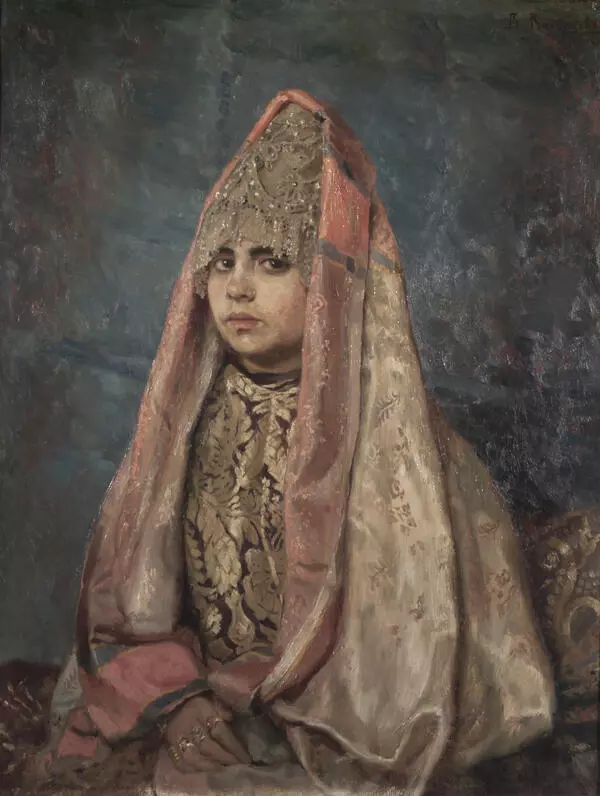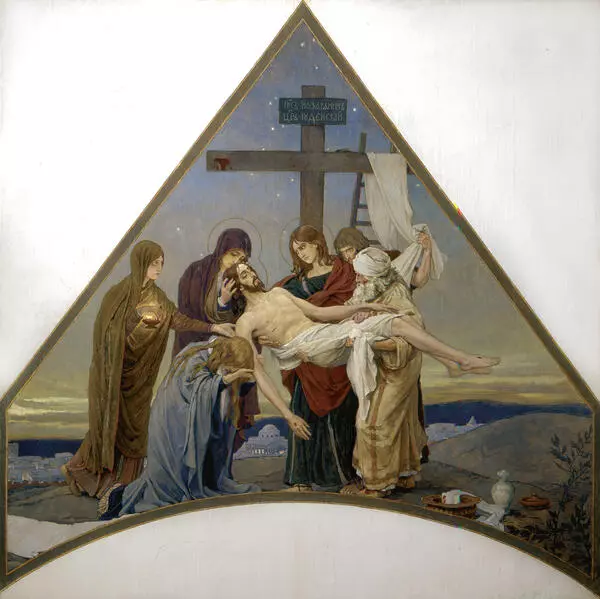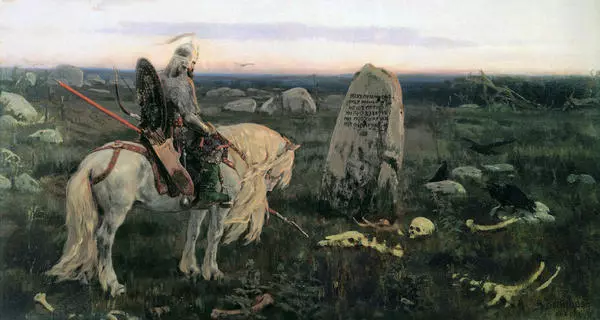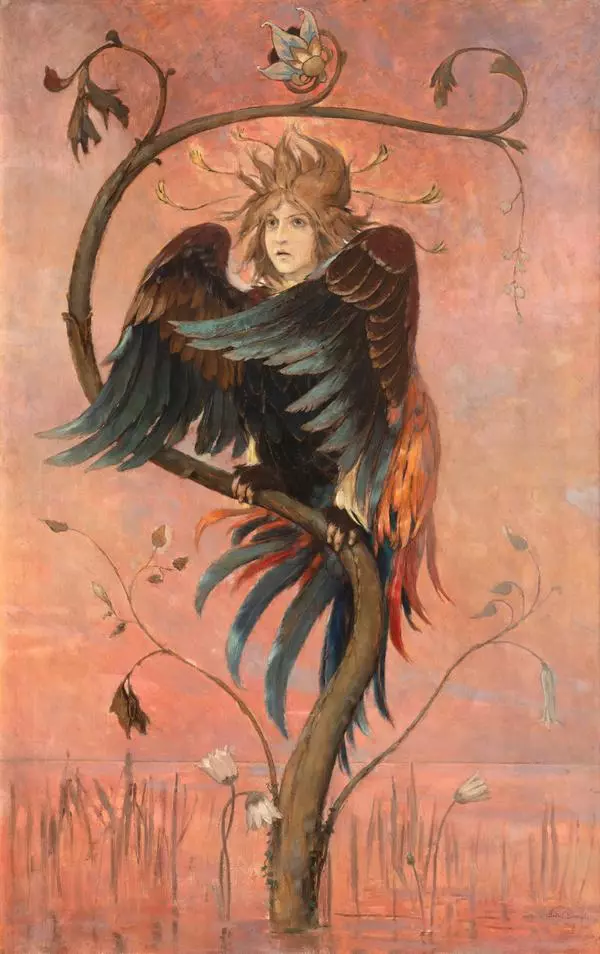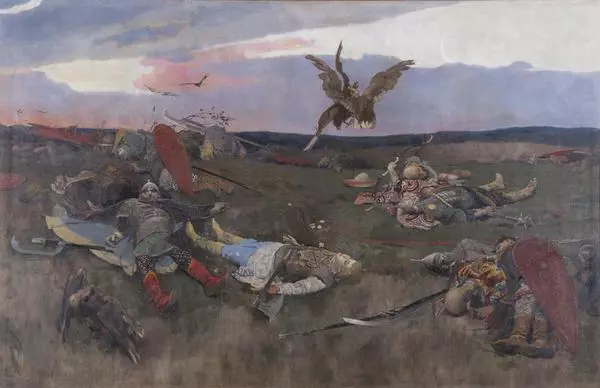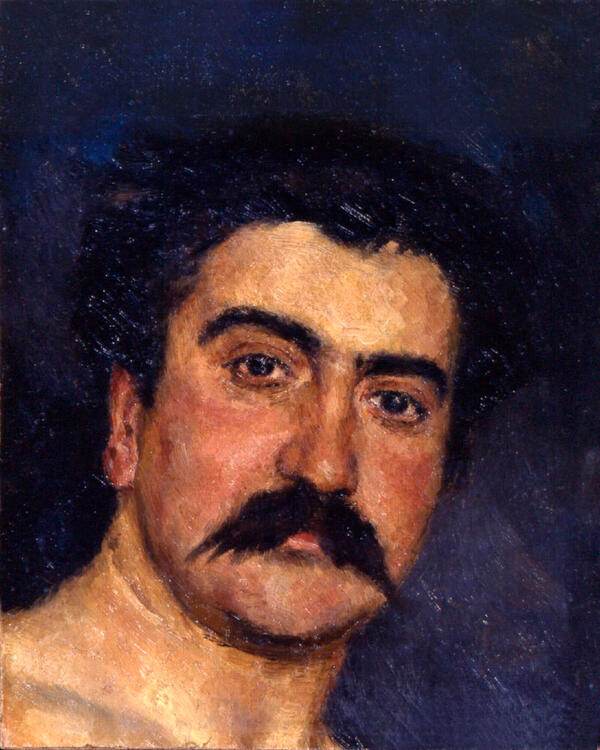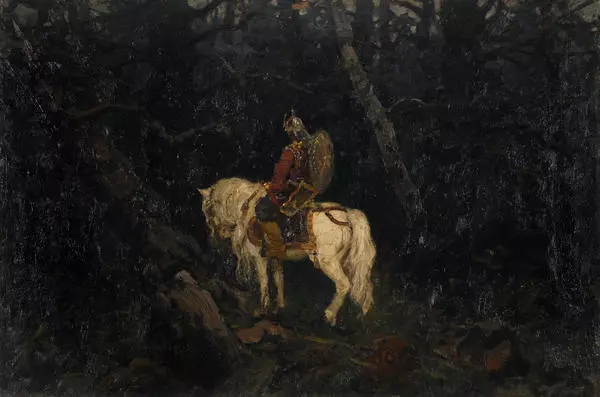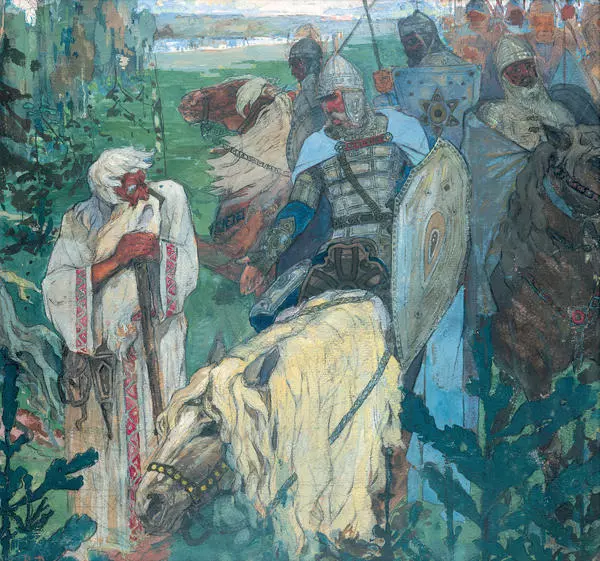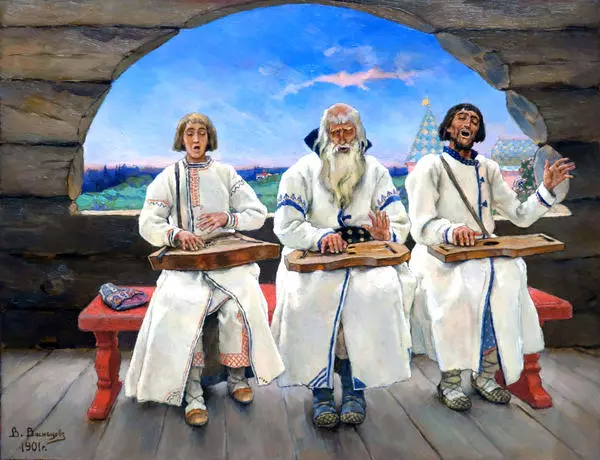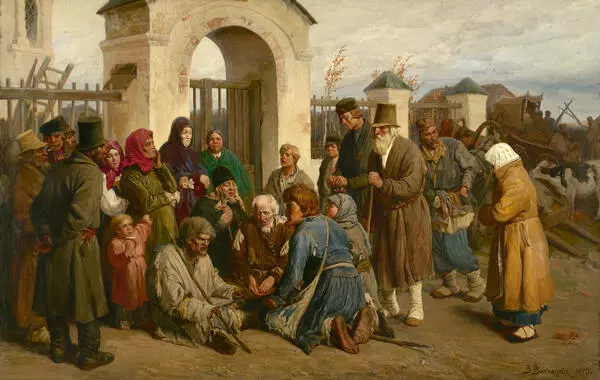Viktor Vasnetsov is a Russian artist, architect and master of historical and folkloristic painting, whose creative work made an important contribution to the development of the national school of painting during its transition from the Itinerants to the Art Nouveau period.
Fairy-Tale is a typical specimen of Vasnetsov’s art that often features fairy-tale motifs. Here, the great Russian artist depicted a thick dark forest where no human foot had ever trodden before. Yet, the brave hero is peering right into the close thicket to thread his way through. The viewer is anticipating an incredible story to be told. They already know the beginning and can well predict its finale. Vasnetsov creates a special atmosphere of suspense: the artist chose the most unexpected pre-climatic moment of the fairy-tale when the fate of the main character is still unclear.
In Vasnetsov’s art, reality and fantasy got intertwined in the most natural way. The artist spent his childhood in the thick woods of the Urals absorbing numerous Russian fairy-tales. When he moved to Saint Petersburg, he paid tribute to his childhood by transferring those magic tales onto his canvases. Vasnetsov called himself a ‘historical painter with a somewhat fantastic twist’. No doubt, one of the sources of his inspiration in creating the Poem of Seven Fairy-Tales apart from his childhood memories and some specific ideas about the fate of the Russian people, there were Russian Fairy-Tales, a collection of Russian fairy and folk tales compiled by Alexander Afanasyev and first published in 1855-63. It was, indeed, an important event in the Russian cultural life of the time, which had a wide-ranging impact on the human sciences: for example, Afanasyev made the first ever attempt in the world history to create a classification of fairy-tale plots. However, ordinary readers, including Viktor Vasnetsov himself, were also overwhelmed by the richness of the Russian folklore.
In 1883, when the artist was still enthusiastically exploring the theme of fairy-tales, a gazebo shaped as a ‘hut on hen”s legs’ and serving as a decorative park pavilion was built to his design at the Abramtsevo estate, whose owner Savva Mamontov was an art patron and friend to many Russian artists.
Fairy-Tale is a typical specimen of Vasnetsov’s art that often features fairy-tale motifs. Here, the great Russian artist depicted a thick dark forest where no human foot had ever trodden before. Yet, the brave hero is peering right into the close thicket to thread his way through. The viewer is anticipating an incredible story to be told. They already know the beginning and can well predict its finale. Vasnetsov creates a special atmosphere of suspense: the artist chose the most unexpected pre-climatic moment of the fairy-tale when the fate of the main character is still unclear.
In Vasnetsov’s art, reality and fantasy got intertwined in the most natural way. The artist spent his childhood in the thick woods of the Urals absorbing numerous Russian fairy-tales. When he moved to Saint Petersburg, he paid tribute to his childhood by transferring those magic tales onto his canvases. Vasnetsov called himself a ‘historical painter with a somewhat fantastic twist’. No doubt, one of the sources of his inspiration in creating the Poem of Seven Fairy-Tales apart from his childhood memories and some specific ideas about the fate of the Russian people, there were Russian Fairy-Tales, a collection of Russian fairy and folk tales compiled by Alexander Afanasyev and first published in 1855-63. It was, indeed, an important event in the Russian cultural life of the time, which had a wide-ranging impact on the human sciences: for example, Afanasyev made the first ever attempt in the world history to create a classification of fairy-tale plots. However, ordinary readers, including Viktor Vasnetsov himself, were also overwhelmed by the richness of the Russian folklore.
In 1883, when the artist was still enthusiastically exploring the theme of fairy-tales, a gazebo shaped as a ‘hut on hen”s legs’ and serving as a decorative park pavilion was built to his design at the Abramtsevo estate, whose owner Savva Mamontov was an art patron and friend to many Russian artists.
